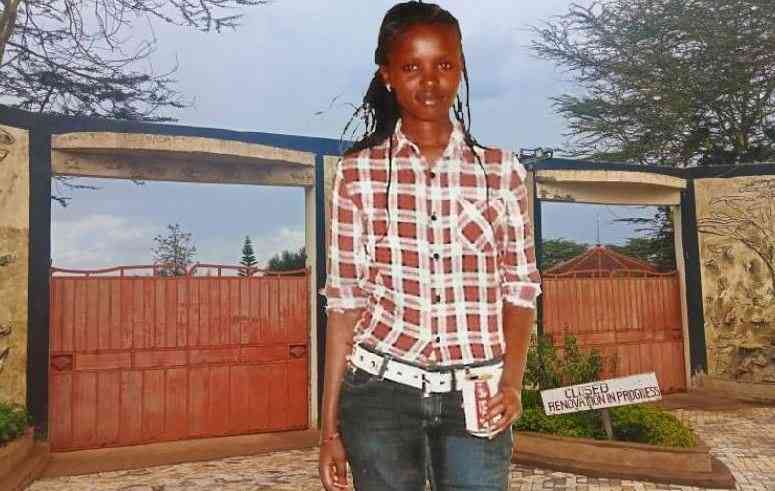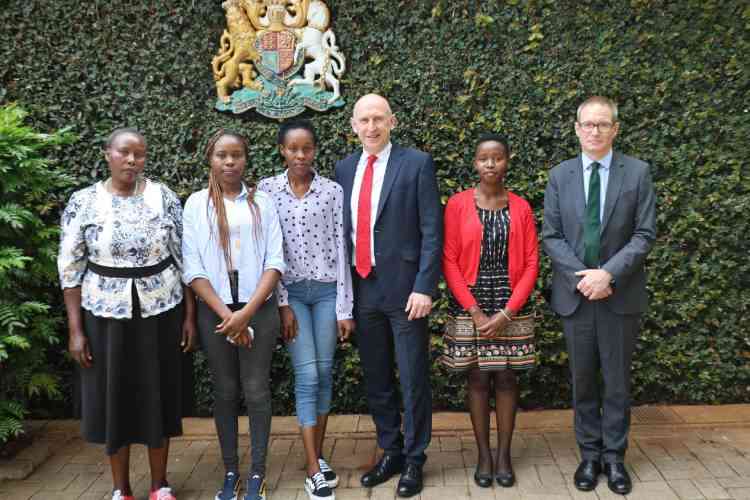By Job Weru
Laikipia, Kenya: The British Army has for almost 60 years used various spots in the Rift Valley for jungle training and live manoeuvres.
But their training was engulfed in controversies, with pastoralists in Laikipia and Samburu saying the soldiers left live bombs and other ordinances in their grazing fields used as training grounds.
Hundreds of Kenyans, especially women and children, have been seriously injured or killed by unexploded bombs left on the ranges.
In 2001, 233 victims who were killed, injured or maimed by the undetonated bombs came together and threatened to sue the British Government.
But in 2002, and under guidance of a community-based organisation, Osiligi, they managed to strike an impressive out-of-court deal with the British Department of Defence.
The deal was struck on August 7, 2002 between the Ministry of Defence and lawyers representing some 228 Maasai and Samburu bomb victims for them to pay £4.5 million plus costs for the injuries and deaths, arising from the British Army’s use of the practice ranges at Archers Post and Dol Dol in Samburu East and Laikipia North districts.
Mr Martin Leigh Day, a British lawyer who represented the claimants said in paying the money, the Ministry of Defence accepted limited liability for the injuries and deaths occurring.
Catastrophic injuries
In a statement, Mr Day noted: “We pursued a claim against the Ministry of Defence in London and in July 2002 we successfully negotiated a deal for them to pay £4.5 million (currently about Sh585 million) plus costs to the 233 Kenyan victims, bringing hope to a community where none had previously existed.”
According to Day, the payment was compensation for catastrophic injuries such as blindness, deafness, burns and amputations.
And in 2004, hundreds of Maasai and Samburu herders formed long queues at Nanyuki Standard Chartered Bank branch to receive their compensation.
Mr Johnson ole Kaunga, a former official with Osiligi said individual claimants were paid amounts commensurate with the level of their injuries, with the most seriously injured, Beatrice Lelekong from Maralal, receiving about Sh30 million.
“The second highest earner was a blind minor, Ilmolian Lekoriani from Archers Post in Samburu, who received Sh29 million, while the lowest got about Sh30,000.
Mr Kipise Lourokeek was third with Sh19 million.
Stay informed. Subscribe to our newsletter
The package was worthwhile, although it is unfortunate that not all claimants put the money to good use,” said Kaunga in an interview with The Standard.
 The Standard Group Plc is a
multi-media organization with investments in media platforms spanning newspaper
print operations, television, radio broadcasting, digital and online services. The
Standard Group is recognized as a leading multi-media house in Kenya with a key
influence in matters of national and international interest.
The Standard Group Plc is a
multi-media organization with investments in media platforms spanning newspaper
print operations, television, radio broadcasting, digital and online services. The
Standard Group is recognized as a leading multi-media house in Kenya with a key
influence in matters of national and international interest.
 The Standard Group Plc is a
multi-media organization with investments in media platforms spanning newspaper
print operations, television, radio broadcasting, digital and online services. The
Standard Group is recognized as a leading multi-media house in Kenya with a key
influence in matters of national and international interest.
The Standard Group Plc is a
multi-media organization with investments in media platforms spanning newspaper
print operations, television, radio broadcasting, digital and online services. The
Standard Group is recognized as a leading multi-media house in Kenya with a key
influence in matters of national and international interest.



